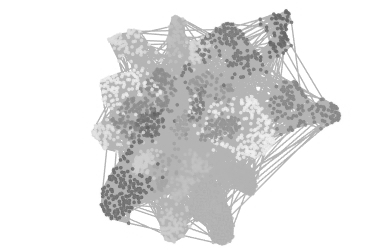Expertise’s domains

Deep learning
Deep learning is a sub-area of machine learning, where the used architectures are "deep,” i.e. made of multiple successive layers. The complexity resulting allows for solving complex tasks such as object recognition, audio generation or even playing complex games. Nevertheless, this complexity comes at the cost of optimization and design challenges.

Graph signal processing
Graph signal processing is a special area in signal processing based on spectral graph theory that allows to synthesis the manifold structure of the data. It can be then exploited for many machine learning or signal-processing tasks including: filtering, de-noising, in-painting, compression, clustering, partitioning, sparsification, features extraction, classification and regression.

Machine learning
Machine learning is the science of getting computers to perform a given task “without being explicitly programmed” (Arthur Samuel in 1959). In the two last decades, machine learning has imposed itself in our every-day life with self-driving cars, speech or face recognition, effective web search, spam detection and product recommendation systems. Machine learning is so ubiquitous today that you probably use it multiple times in a day without actually realizing it. Due to the recent progresses in deep learning, some researchers even believe that it will lead us towards human-level artificial intelligence.

Optimization
Optimization is a field of mathematics where the goal is to select the best element with respect to criteria from a set of available alternatives. Put this way, it resembles a mathematician’s playground. However, optimization is at the heart of many algorithms. It is used to answer direct questions like: What is the best financial investment that I can make? What is the best shape for this component? Where is the safest place to live?
